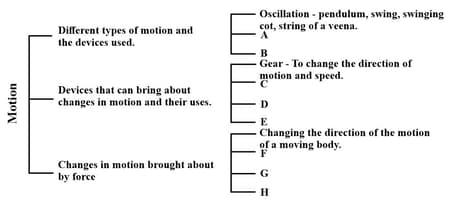EASY
Earn 100
The triangular law of vector addition and triangular law of velocities are the same.
(a)True
(b)False
50% studentsanswered this correctly
Important Questions on Dynamics
EASY
EASY
If two velocity vectors and with equal magnitude and angle between them is then resultant is velocity is
HARD
Complete the following concept map suitably.
EASY
EASY
EASY
EASY
EASY
Write the motion of different parts of a bicycle while it is motion
a) the wheel
b) the cycle chain
c) the pedal with its arm
d) the movement of the feet pedaling
e) the movement of the rider along with the bicycle.
EASY
A body moves due North-East with velocity and then due East with velocity . Find the resultant velocity
EASY
EASY
A body moves due East with velocity and then due North with velocity . Find the resultant velocity.
EASY
MEDIUM
EASY
MEDIUM
The table on oscillation prepared by Likitha, Iqbal, and Sonu given below.
| Likitha | Iqbal | Sonu |
| The motion of the membrane across the drum head of a chenda, on beating it. | The motion of the membrane across the drum head of a chenda, on beating it. | The motion of an arrow, shot from a bow. |
| The motion of a swinging cot. | The motion of a string while playing a veena. | The motion of the prongs of excited tuning fork. |
| The motion of a giant wheel. | The motion of the prongs of the excited tuning fork. | The motion of a stretched metal wire on strumming it. |
What is the main difference between vibration and oscillation?
EASY
EASY
EASY
MEDIUM
Give one example for each of the following.
- Rotational motion
- Circular motion
- Compound motion.
EASY


